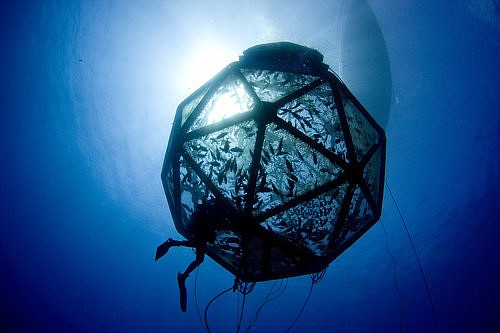- January 7, 2025
-
-
Loading

Loading

A Hawaii-based company is hoping to establish an aquaculture project 45 miles off the coast of Sarasota but would need a discharge permit to do so, which is causing many Sarasota residents to worry about the threat of red tide.
Kampachi Farms wants to host 20,000 longfin yellowtail, or Almaco jack, in a pen suspended below the surface of the Gulf of Mexico.
The facility would include a supporting vessel and a single cage in a water depth of 130 feet, according to the permit draft. The 20,000 Almaco jack would produce a maximum annual harvest of 88,000 pounds.
“The primary goal of the demonstration project is to help the local communities in the Gulf of Mexico to understand the ancillary benefits that offshore aquaculture can bring to fisheries and to recreational tourism,” Kampachi Farms CEO Neil Anthony Sims said in a blog on the organization’s website.
However, antibiotics and other chemicals that might be used in the farm cause the company to need a discharge permit.
Because of this, the Environmental Protection Agency will host a public hearing at 5:30 p.m. Jan. 28 at Mote Marine Lab and Aquarium.
Ahead of the hearing, the EPA Region 4 published a draft of the permit in August that would allow the discharge of industrial wastewater from the net-pen facility.
The permit would require Kampachi to monitor several factors, such as medicinal products used on the fish and discharges of pollutants including chlorophyll, copper, phosphorus, sulfide and nitrogen.
It is these types of discharges that have organizations including Friends of the Earth and the Northwest Atlantic Marine Alliance and residents like Ron Kashden worried.
“There seems to be a relationship between algae growth and the fisheries,” Kashden said. “Like all the other residents in Sarasota over the past two years, just being devastated by red tide, at some point, you start to wonder, ‘What is causing this, and how can we prevent it?’”
Kashden said that not only did the last bout of red tide cause a dip in tourism economy, but he also knew several people who experienced issues with asthma and decreased fishing profit.
A Friends of the Earth report states that a fish farm of 20,000 would release fecal matter equivalent to that of 6,300 people. Similar fisheries have been halted in Denmark to protect the Danish environment.
Larry Brand, a researcher and professor of marine biology of Miami Rosentiel School of Marine and Atmospheric Science, has found that when the Gulf’s phosphorus-rich water mixes with nitrogen — one of the pen’s discharges — conditions are ripe for an algae bloom.
“Scientists start arguing whether the combination of chemicals cause red tide or just prolong red tide,” Kashden said. “But to me, as a citizen, I didn’t really care. If this is exacerbating red tide, why in the world would the U.S. try an experiment off this coast?”
The permit would prohibit the discharge of floating solids, visible foam, surfactants, dispersants, detergents and toxic chemicals. Additionally, the facility and anchoring system will be placed at least 500 meters away from any hard bottom habitat on the seafloor.
Kampachi Farms has already conducted two trials in its home state of Hawaii, which have proven successful.
A 2012 test that allowed an aquapod holding 2,000 fish to drive between 2 and 75 miles offshore was named one of Time Magazine’s 25 best inventions of the year. A second test placed an aquapod 6,000 feet deep off the coast of Kona.
The proposal for the Gulf of Mexico is funded through Florida Sea Grant and is planned to be a one-year demonstration project. Mote Marine is also a stakeholder in the project and will provide fingerling Almaco jack raised at the Mote Aquaculture Research Park for the project.
The fish in the aquapod will be fed from a barge that would be tethered to the side of the pen. The fish are expected to grow to market size within 12 months.
If the project proves successful, Kampachi officials will begin discussions on how to move the fishing industry forward.